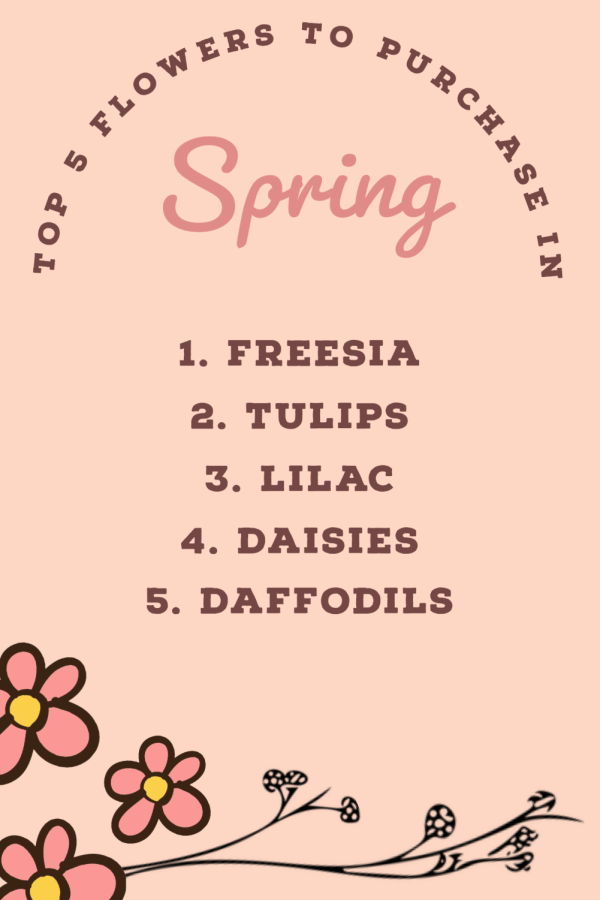Flowers of Spring: What Do They Mean?
Spring is the time where flowers flourish–and, in turn, so do their sales. Whether found in a grocery store or a flower shop, each spring certain blossom types seem to sell a bit more than their verdant companions.
BUT…did you know that during the 19th century, a complete Victorian language of flowers, also known as floriography, was first introduced by Charlotte de la Tour in her written work Le langage des fleurs? Each flower was imbued with a meaning stemming from literature, mythology, religion, medieval legend, or even a blossom’s shape.
The Bulldog Tribune wants to give you all the information you need to give floral arrangements with proper communication. Here are the top five spring sellers along with their floriography meanings.
- Freesia
Freesia holds the meaning of lasting friendship. Its name comes from Christian P. Ecklon, a botanist, who named the flower to commemorate his and fellow botanist, Friedrich H.T. Freese’s friendship. Try showing your appreciation to your friends with this perennial bulb.
- Tulips
Tulips are used to express a declaration of love. In a Turkish legend of forbidden lovers, Ferhad and Shirin, Ferhad hears a rumor of Shirin’s suicide. In an act of devotion, Ferhad takes his own life so they can be together for eternity, there, in his spilled blood, tulips sprouted. The flower became a staple part of the Turks’ love lives, the dark center representing a heart charred from the burning passion and the vibrant petals representing the fire of their lover’s beauty. Need your love declared? Pick up some tulips for your special someone.
- Lilac
A lilacs presence is used to portray the first emotions of love. In Greek mythology, Syringa, a nymph, disguises herself as a lilac bush to avoid Pan, the God of forests, who had fallen in love with her. When he discovered the bush, he used its hollow reeds to create the pan flute to memorialize his first love. The blossom continued to brandish its meaning throughout literature and art later on, appearing as a lilac tree in Charles Dickens’s David Copperfield, a lilac dress in Charlotte Brontë’s Jane Eyre, and a hair adornment in John Everett Millais’s painting titled Spring. Got a feeling fuzzy and new? Grab a lilac and hope for the best!
- Daisies
Daisies, dainty and delicate, are representative of innocence. Known for centuries as the symbol for this trait, the daisy shows up in Celtic beliefs as well as medieval writings. It is said in Celtic tradition that when a child dies at birth, an angel will throw a daisy down to earth and it will grow for the spirit of that child. In addition to these age-old lessons, Victorian children would weave chains of daisies and country maids may decorate their hair with the blossoms. It is often tied to Freya, the goddess of fertility, motherhood, and childbirth. Compliment these qualities in someone you know with a proper daisy.
- Daffodils
Daffodils, also known as Narcissus, are said to represent unrequited love. The meaning stems from the story of a Greek god of the same name. All his life he had rejected romantic advances until one day he came across a reflection in a spring. Unaware he was looking at himself, Narcissus was bewitched and spent eternity trying to kiss the reflection only to witness the image disperse with the ripples he created. Eventually he perished next to the spring, failing to part with his reflection. In the soil where he passed, a flower sprouted, the one we now know as the daffodil. Feeling rejected? Try incorporating a daffodil somewhere in your day!

Lex Chapman is currently a senior at SBHS and is a returning section editor for the "Bulldog Tribune". Lex also plays an active leadership role in the...


